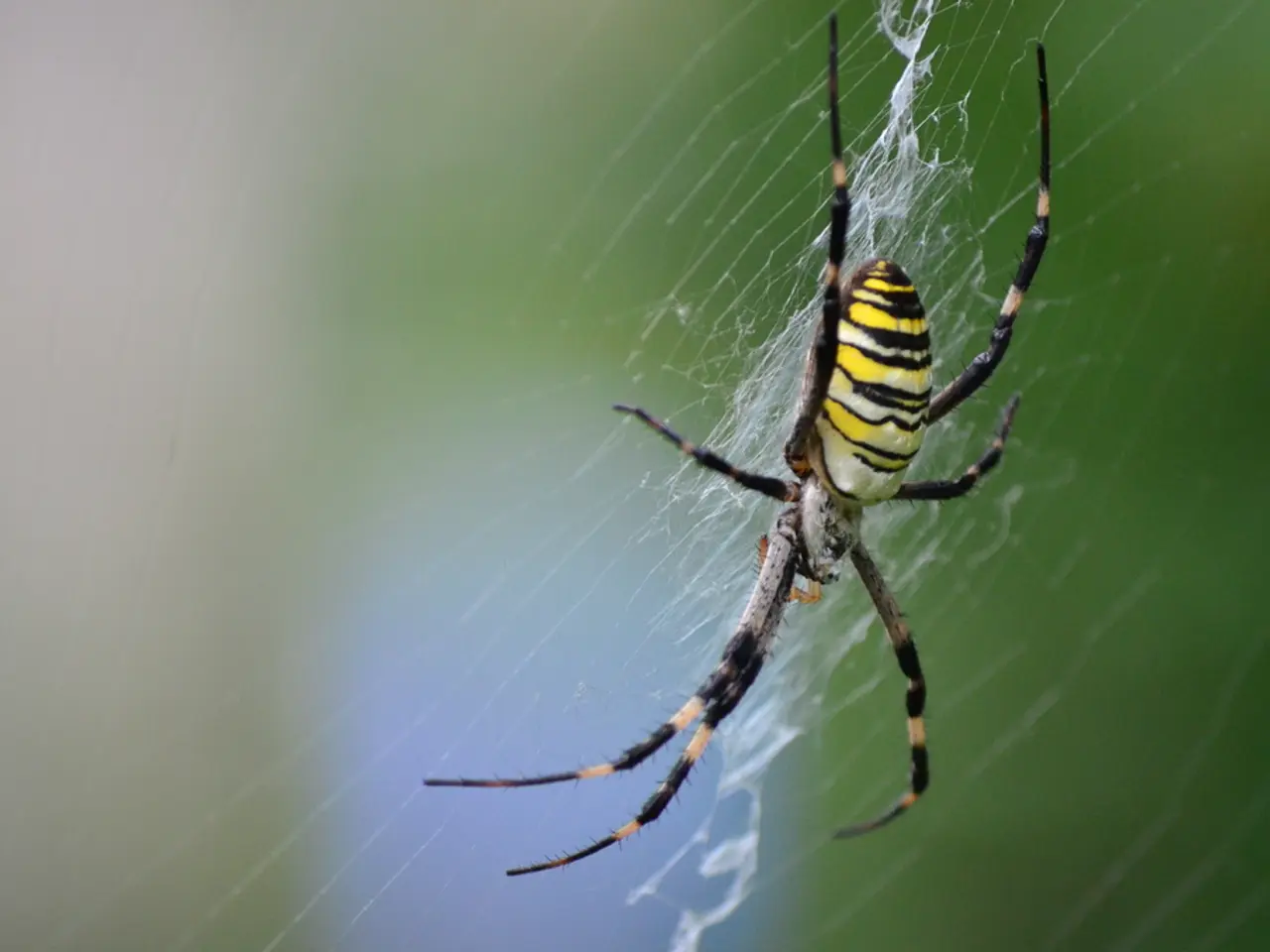Invasive female joro spiders could involve consuming other spiders of their kind.
Parachuting Joro Spiders: A Shocking Twist in Their Behavior
In a surprising turn of events, researchers have discovered that the world-famous parachuting Joro spiders, known for their vibrant yellow and black appearance, exhibit aggressive behavior towards conspecifics (members of the same species) under certain conditions [1][2]. This revelation challenges the common perception of these spiders as shy creatures.
The aggressive encounters between female Joro spiders are primarily influenced by environmental factors that promote cannibalism, such as scarcity of resources or high population density. This suggests that factors like food availability and crowding may trigger such aggressive interactions. However, specific triggers such as territoriality or mating behaviors remain unclear [3].
Interestingly, in a more natural environment, fights between female Joro spiders occur less frequently. This could be due to the spiders' preference for a sedentary lifestyle, as ecologist Robert Pemberton, an independent researcher in Atlanta, explains. Joro spiders typically sit and wait rather than wander around [4].
In a spider census of Atlanta forests for 2022 to 2025, published by Pemberton in April, there has been an increase in the number of Joro spiders while native orb weavers decline each year [5]. This trend raises concerns about the potential impact of Joro spiders on local ecosystems.
Despite their aggressive tendencies, Joro spiders do not harm people or pets. In fact, they may prey on other invasive species, such as the spotted lanternfly, which destroys trees, as mentioned by ecologist Davis [6].
Future experiments with webs containing resident female Joro spiders could provide insights into how they react to intruders on their territory. Understanding the behavior of these spiders is crucial, as highlighted by ecologist Grabarczyk, who emphasizes the importance of studying their ecological impact as they spread [7].
Despite their aggressive behavior, Joro spiders are considered one of the world's shyest spiders. Even a simple act like blowing a puff of air in a Joro spider's face can cause it to freeze for over an hour [8]. This further underscores their peaceful nature when undisturbed.
In conclusion, while Joro spiders have been observed engaging in cannibalism among females, their aggressive behavior appears to be condition-dependent, particularly related to cannibalistic tendencies under environmental pressures like limited food or overcrowding. Further detailed studies would be required to delineate all specific behavioral triggers.
- Rather than being wanderers, Joro spiders prefer a sedentary lifestyle, sitting and waiting for prey to approach, as ecologist Robert Pemberton explains [4].
- In the field of health-and-wellness, knowing the ecological impact of Joro spiders is crucial due to their potential behavioral triggers on local ecosystems [7].
- Researchers suggest that factors such as scarcity of resources or high population density may cause aggressive interactions between female Joro spiders [3].
- Fitness-and-exercise enthusiasts might find it fascinating that a simple act like blowing air can cause a Joro spider to freeze for over an hour, demonstrating their peaceful nature when undisturbed [8].
- Environmental-science specialists argue that understanding the behavior of Joro spiders is important when considering their impact in forests, particularly considering the spider census that shows an increasing number of Joro spiders in Atlanta while native orb weavers decline each year [5].




